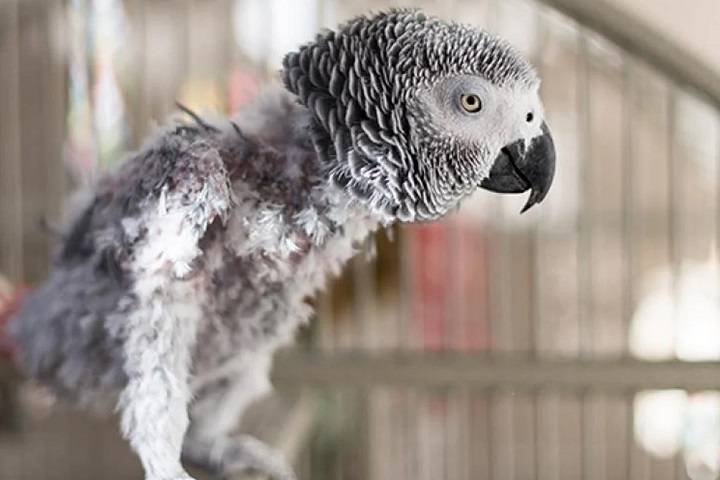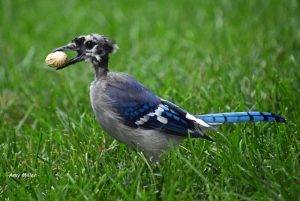Molting is a natural and essential process for birds, during which they shed and replace old feathers with new ones. This renewal of feathers is crucial for maintaining their ability to fly, thermoregulate, and stay in peak physical condition. However, have you ever wondered how the molting process affects a bird’s behavior? In this comprehensive guide, we will explore the fascinating relationship between molting and avian behavior, shedding light on when and how this process can influence your feathered companions.
Understanding the Molting Process
Before delving into the impact of molting on bird behavior, it’s essential to understand the molting process itself. Molting is a cyclical and energy-intensive event in a bird’s life. While the specific timing and duration of molting can vary among bird species, some general patterns exist.
When Do Birds Molt?
Birds typically undergo molting at specific times of the year, primarily influenced by factors such as:
- Season: Most birds molt during the non-breeding season when the demands of nesting and raising young are lessened. This period usually coincides with the availability of food resources.
- Day Length: Day length and photoperiod play a crucial role in triggering molting. As daylight hours decrease, signaling the approach of autumn and winter, many birds enter the molt.
- Hormonal Changes: Hormonal changes, especially a decrease in reproductive hormones, stimulate molting. This hormonal shift occurs when breeding season ends.
- Food Availability: The abundance of food resources, particularly insects and other protein-rich sources, can influence the timing and duration of molting.
Behavioral Changes During Molting
Molting can have a significant impact on a bird’s behavior, and these changes can vary from one species to another. Here are some common behavioral alterations that birds may exhibit during molting:
Reduced Activity:
Molting is physically taxing for birds as it requires a substantial amount of energy and nutrients. To conserve energy, birds often reduce their overall activity levels. You may notice your bird spending more time perched or resting during this period.
Increased Feather Care:
Birds take extra care of their new feathers during molting. They preen and groom extensively to help the emerging feathers develop correctly. This behavior can be particularly noticeable as they focus on specific areas where old feathers are being replaced.
Aggression:
Some birds may become more irritable or aggressive during molting. The discomfort associated with feather loss and growth can make them less tolerant of interactions with humans or other birds.
Decreased Singing and Vocalization:
The energetic demands of singing and vocalizing can be reduced during molting. Birds may sing less or produce softer vocalizations during this time.
Reduced Flying:
The loss of feathers can temporarily affect a bird’s ability to fly efficiently. While they may still fly when necessary, they tend to avoid unnecessary flights to conserve energy.
Restlessness:
On the flip side, some birds may exhibit restlessness during molting, especially if they are experiencing discomfort or itching as new feathers emerge. They may engage in more frequent movements and changes in perching locations.
Increased Food Consumption:
To support the energy-intensive process of molting, birds may increase their food consumption. You may notice your bird eating more during this period as they require additional nutrients for feather growth.
Social Withdrawal:
Social dynamics within a flock or with human companions can change during molting. Some birds may withdraw from social interactions, while others may seek the comfort of their flock members.
Species-Specific Behaviors During Molting
It’s essential to recognize that the impact of molting on behavior can vary significantly among different bird species. Some birds may display more pronounced behavioral changes during molting, while others may exhibit minimal alterations. Here are a few examples of species-specific behaviors during molting:
Parrots:
Parrots are known for their strong bond with their human companions. During molting, they may become more sensitive and less tolerant of handling. They might also engage in increased preening and grooming.
Waterfowl:
Waterfowl, such as ducks and geese, often molt all their flight feathers simultaneously, rendering them temporarily flightless. During this time, they may remain near water bodies where they feel safe from predators.
Songbirds:
Songbirds, like finches and canaries, may reduce their singing and become less active during molting. They may also require a higher-quality diet to support feather growth.
Raptors:
Raptors, including hawks and eagles, may experience increased irritability during molting. They may display defensive behaviors if approached.
When Do Birds Molting Impact Their Behavior
Molting can be a challenging time for birds, both physically and behaviorally. As a responsible bird owner, you can take steps to support your feathered friend during this period:
- Nutrition: Provide a balanced diet rich in protein, vitamins, and minerals to support feather growth. Consult with an avian veterinarian for dietary recommendations.
- Grooming: Offer opportunities for your bird to bathe or shower to keep their feathers clean and promote healthy growth.
- Comfort: Ensure your bird has a comfortable and quiet place to rest. Avoid unnecessary handling or disruptions during molting.
- Dietary Supplements: If recommended by a veterinarian, consider dietary supplements to support feather health.
- Toys and Distractions: Offer toys and activities that can engage your bird’s mind and alleviate restlessness.
- Veterinary Care: If you notice any signs of distress or health issues during molting, consult with an avian veterinarian for a thorough examination.
Frequently Asked Questions (FAQs)
Can I help speed up my bird’s molting process?
No, molting is a natural process that cannot be accelerated. It follows a predetermined schedule influenced by factors such as season and hormonal changes.
How long does molting typically last in birds?
The duration of molting varies among species and individuals. It can last anywhere from a few weeks to several months, depending on the bird’s size and the extent of feather replacement.
Are there any signs of illness that mimic molting behavior changes?
Yes, some signs of illness, such as lethargy or decreased activity, can resemble molting behaviors. If you suspect your bird is unwell, consult with a veterinarian for a proper diagnosis.
Can I help ease my bird’s discomfort during molting?
Providing a comfortable environment, a nutritious diet, and opportunities for bathing or showering can help ease your bird’s discomfort during molting.
Related Post:
Cracking the Cayuga Duck Egg Mystery: Unveiling the Secrets of Cayuga Duck Eggs
Exploring Duck-Chicken Compatibility: Can They Coexist?
Unraveling the Complex World of Aggressive Male Duck Behavior
Molting is a natural and essential process in a bird’s life, allowing them to maintain healthy and functional feathers. While it can impact their behavior, these changes are temporary and necessary for their well-being. As a caring bird owner, understanding the behavioral alterations during molting and providing appropriate support can ensure that your feathered companion navigates this period comfortably and emerges with a renewed plumage, ready to take flight once again.




